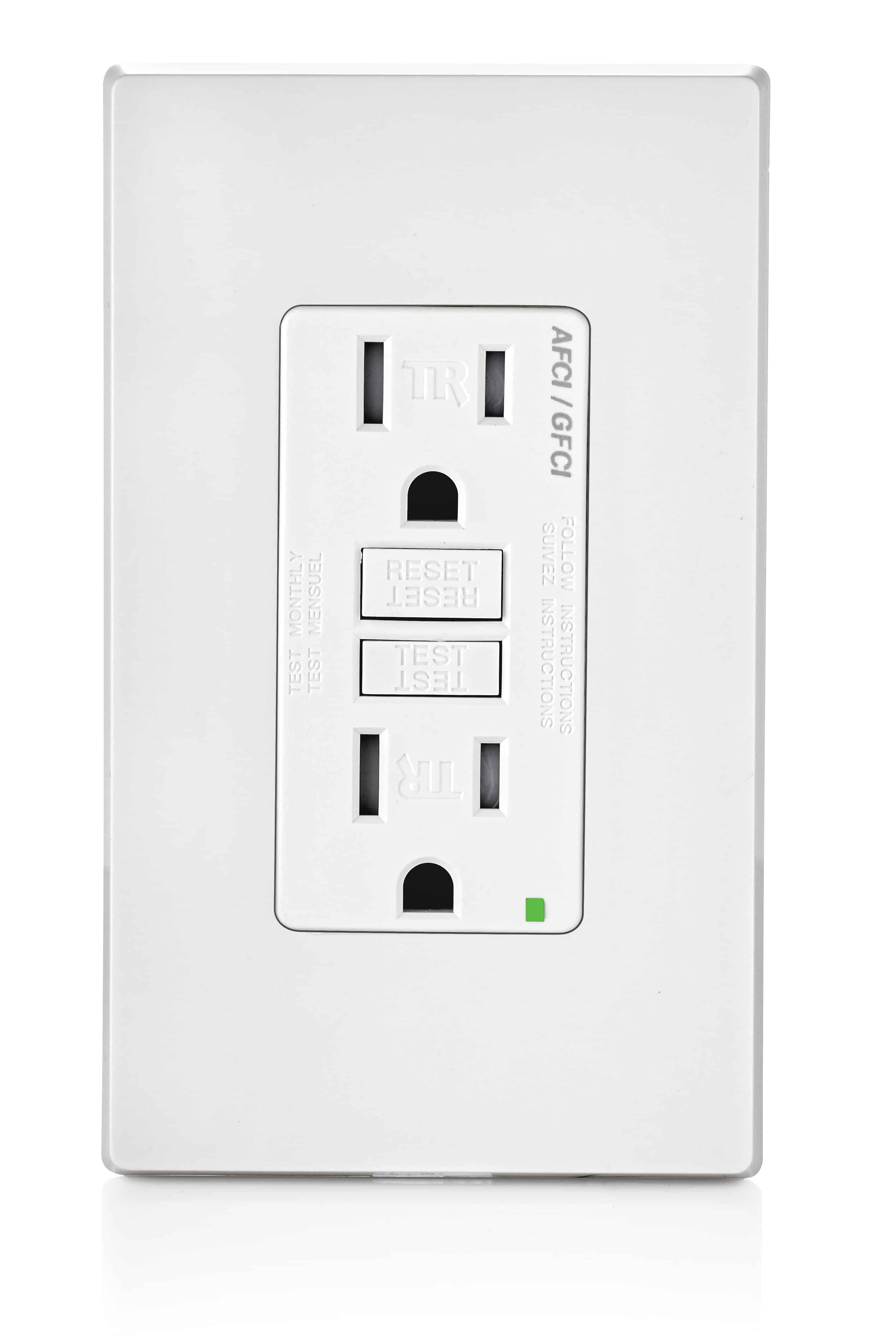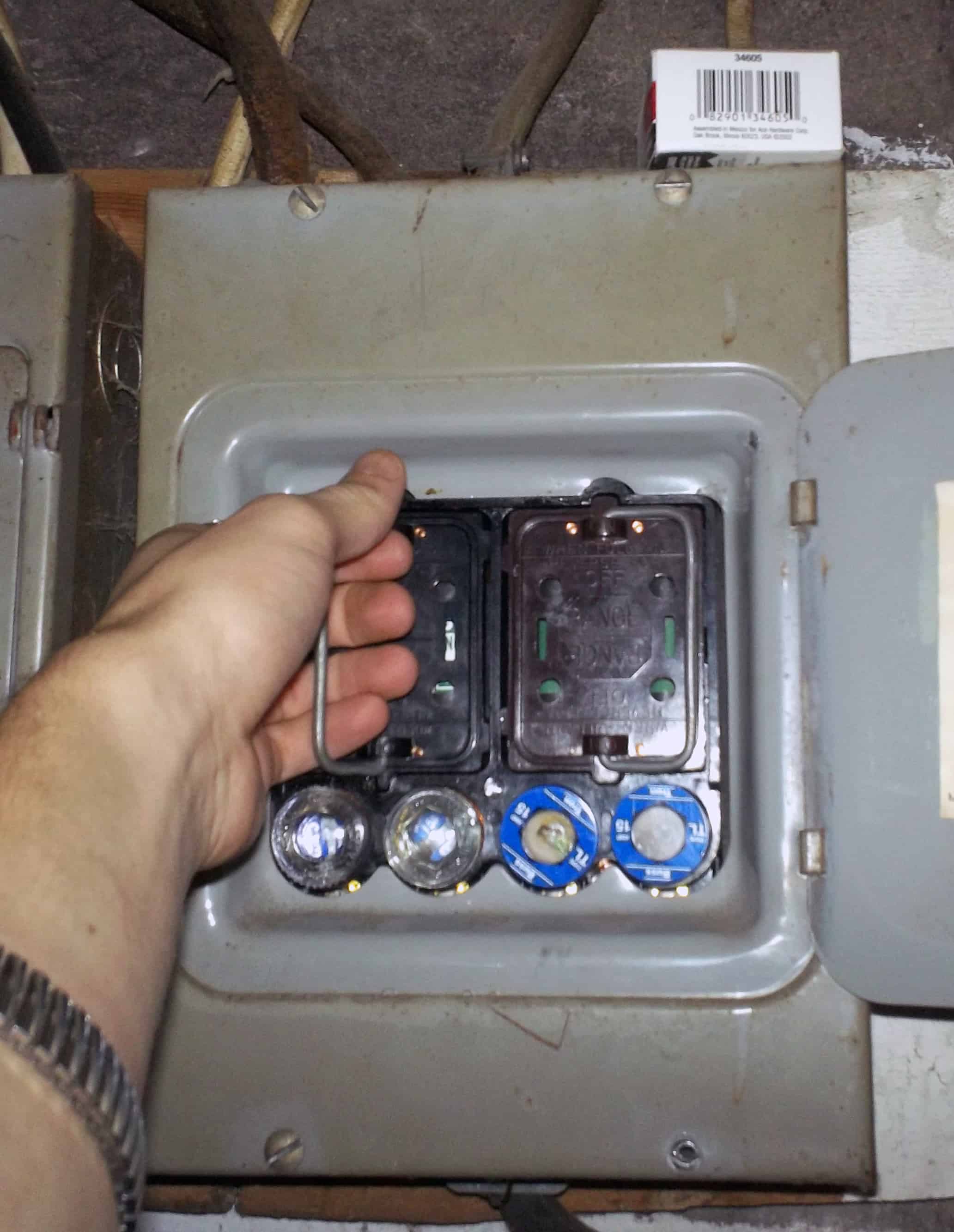Between 1920 and 1960, tens of thousands of houses were built in the United States. Almost all of them had two prong outlets. Many of them still do. While the majority of Indiana’s houses were built in the 1990s, there are more than 8,600 currently for sale built between 1920 and 1960 in the Hoosier state. Many more off the market. If you live in a house with two prong outlets, you might want to consider an upgrade. You are at risk for more than inconvenience when you try and plug in your 21st century TV into one of these outlets.
Risks Associated With Two Prong Outlets
There are two risks associated with two prong outlets: electrocution and power surges. Both of these issues have to do with the fact that the wiring in two prong outlets isn’t grounded. In outlets built since 1962, U.S. electrical code has required all outlets be constructed with a ground wire. This ground wire protects electronics and people from electrical surges and faults by providing a pathway for extra energy to escape the house’s circuitry. When a fault or surge occurs with grounding, the energy travels through the ground wire to the electrical panel. There, it will trip the circuit breaker or blow a fuse, thereby shutting down the circuit before damage (hopefully) occurs. The energy then continues through the ground wire into the earth below the structure, where it dissipates harmlessly.
Without grounding, it’s also impossible to protect your electronics and appliances with surge protectors. Surge protectors work only if they are can connect to a ground wire. Without this wire, they offer no better protection for electronic devices than do multiprong outlets.

Two Prong Outlets are Not Up to Code
Upgrading your home’s electrical system can cost between 5 and 15 percent of your home’s value — a price tag many people cannot afford. With this in mind, regulators determined that homeowners with two prong outlets need not upgrade them. However, that doesn’t mean they’re the safest option.
For more than 50 years, code has required all new construction have grounded, three prong outlets. More recently, U.S. electrical code has required that not only outlets be grounded but that outlets in areas with water present have a GFCI. A GFCI, short for ground-fault circuit interrupter, protects people from electrical shock by cutting off the circuit if a short circuit occurs. (A short circuit is when energy is directed out of the regular circuit pathway through a path with little or no resistance.) If that short circuit occurs because a person is being electrocuted, a GFCI can save their life.
No such protection is available with a two prong outlet.

Two Prong Outlets Suggest Other Problems
Two prong outlets also raise flags about other electrical issues that may be present. Homes built before 1965 were built with 30- or 60-amp fuse panels. While 60-amp fuse panels were made with at least one 240-volt wire for larger appliances, 30-amp fuse panels only provide 120-volt wiring, and they are inadequate for modern household electrical needs.
60-amp fuse boxes are problematic because they, too, cannot handle well modern requirements upon electrical systems. In comparison, newly constructed homes today are built with 200-amp circuit breakers (the service panels that replaced fuse boxes).
When there is too much energy running through a wire, the wire heats up, putting the house at risk for fire. Too much energy (electricity) will also blow fuses. You will have to constantly replace if your fuse box’s amperage rating doesn’t meet your needs.
Another problem to be on guard for when two prong outlets are present is the lack of grounding in outlets that have three prongs. If a house has both two and three prong outlets, it means that the three prong outlets were installed for convenience and that they’re not actually grounded. It could also means that only part of your house’s electrical system is grounded.
You will want to test your outlets to find out whether they are grounded or not. If the three prong outlets are not grounded, regulations require that you label them with the words “No Equipment Ground.”
Four Ways to Upgrade 2 Prong Outlets
To upgrade your two prong outlets, you cannot simply add a three prong outlet. While this will solve the convenience issue, it will not solve the safety issue.
If you truly want to address your two prong outlets and make them safer, you have four options.
Option 1: Rewire Your Outlets
Your first, and best, option is to hire an electrician to rewire your house’s outlets and its electrical panel. If the expense is a concern, consider having your electrician rewire select outlets into which you will plug larger or more sensitive electronic devices, such as a computer or game counsel.
Note that this is not a project you can do yourself. Only a certified electrician has the expertise necessary to run a ground wire from the outlet to the service panel and then properly ground it.
Option 2: Ground Three Prong Outlets with the Metal Housing Box
Many two prong outlets were installed in metal boxes. While the circuitry itself wasn’t grounded, these individual boxes oftentimes were. If your house has two prong outlets with metal boxes, it is possible you can ground your outlets without overhauling the wiring.
To find out whether the metal housing is grounded, purchase a circuit tester. Insert one of the tester’s prongs into the hot slot (the shorter slot in the outlet). Put the other prong onto a screw holding the cover plate. If the tester lights up, it means the metal box is grounded.
If the box is grounded, you can install a three prong outlet and ground it by attaching it to the armored, or BX, cable in the back of the box.
Option 3: Install a GFCI at the Outlet
The third option to upgrade a two prong outlet is to replace it with a GFCI. While a GFCI will not protect your electronics from power surges, it will protect you from electrocution and short circuits. If you replace your ungrounded, two prong outlet with a GFCI, you must label it with “No Equipment Ground.”
Option 4: Install a GFCI at the Circuit Breaker
It’s also possible to replace your two prong receptacles with three prong ones and add a GFCI circuit breaker at the service panel. Doing this will likewise protect you from electrocution. If you do this, you will have to label outlets with “GFCI Protected, No Equipment Ground.”
Whatever you decide to do, we recommend having a certified electrician complete your electrical work. Safety is always a concern when working with electricity, and an expert will best take care of your home.
